The Volumetrics diet — everything you need to know by Simple
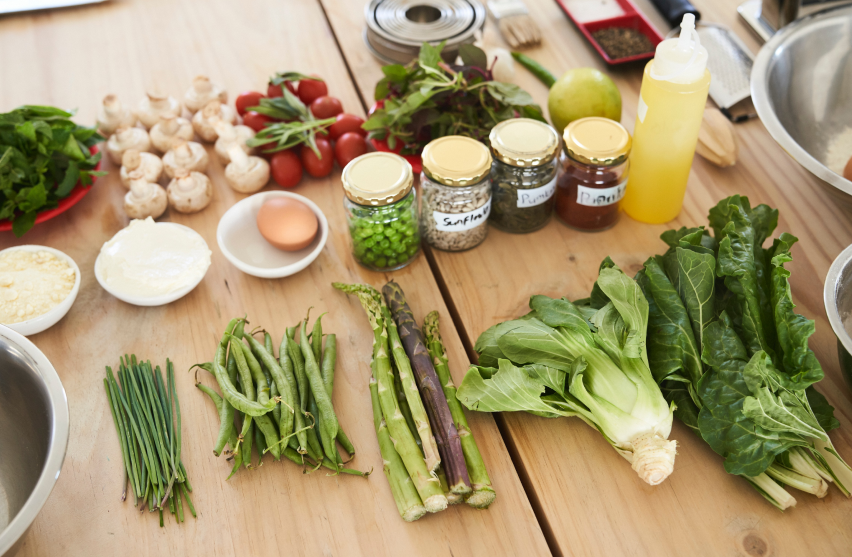
If you’re dieting but rarely feel full or satisfied with what you’re eating, it can feel like hunger is constantly on your tail as you try to lose weight. It’s a common struggle and maybe one you know firsthand.
The Volumetrics diet could just be the solution to this problem!
By focusing on nutrient-rich foods that are low in calories and keep you feeling fuller for longer, the Volumetrics diet helps you lose weight while avoiding the hunger pangs that can knock you off track.

Curious to learn more and see if it’s right for you? Let’s get into it.
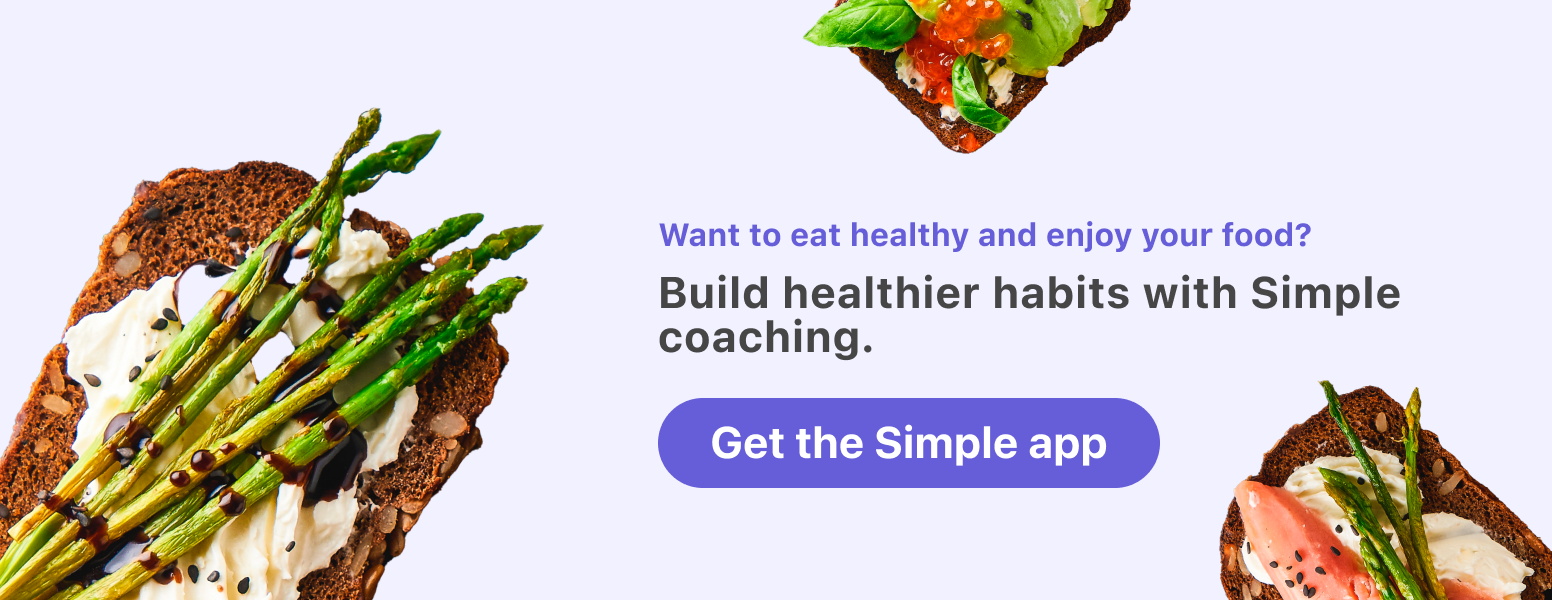
What is the Volumetrics diet?
What if you could lose weight without using a calorie calculator, counting calories and feeling hungry all the time?
You could, on the Volumetrics diet!
This approach was created by nutrition scientist Dr. Barbara Rolls.[2] It emphasizes eating foods that are low in calories but highly nutritious, so you can eat high volumes, feel fuller for longer, and keep your taste buds happy.
The Volumetrics diet is about making healthy, sustainable choices rather than following strict, restrictive rules. Here’s how it works.
Instead of depriving yourself of your favorite foods, simply swap them for healthier alternatives. For example, if you want a hamburger, you might swap out the bread bun for a big ol’ salad. That way, you keep the protein, switch out the nutrient-low bread, and switch in some nutrient-high veggies. You get to eat more food and consume fewer calories overall. It’s a win-win!
But hold up … what if you like bread?
No worries! The Volumetrics diet isn’t about cutting foods out. It’s about balance.
The aim of the game here is to increase the amount of health-promoting foods and decrease the amount of health-depleting ones. More veggies, fruit, and lean protein; less cake and pizza.
So, to start seeing the benefits of a Volumetrics eating style, try a simple step like shrinking your pizza down a size and throwing a salad on the side.
What does research have to say about the Volumetrics diet?
According to research, there’s more to this diet than just losing weight. For instance, this study found that the Volumetrics diet can help improve blood pressure.[3]
There are so many health benefits associated with eating the nutrient-dense foods advocated by the Volumetrics diet.[4]
How does the Volumetrics diet work?
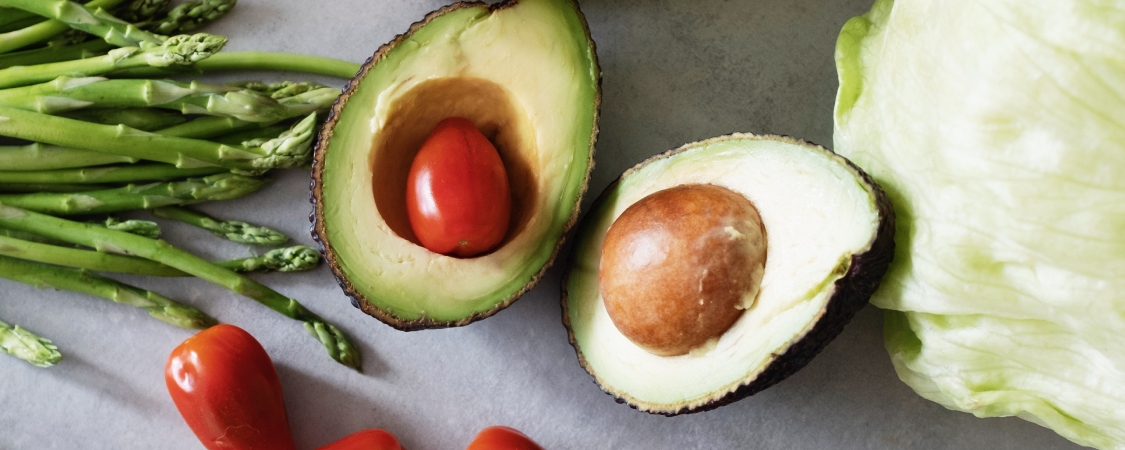
A key principle of the Volumetrics diet is to eat foods that are low in calorie density. This means that the food has a low number of calories per gram. These foods tend to be high in water and fiber and, as such, are more filling, so you’ll be less likely to feel hungry throughout the day.[5]
Low calorie density foods include fruits, vegetables, low-fat dairy, and lean proteins like fish, chicken, and eggs.
By contrast, high calorie density foods, like chips, cakes, and candy, tend to be high in fat and/or sugar. They contain more calories per gram.
On the Volumetrics diet, the aim is to focus on low calorie density foods so you can eat larger portions while staying in a calorie deficit (which you need in order to lose weight).
The Volumetrics diet schedule and meal plan
Foods to eat and avoid on the Volumetrics diet
As we mentioned, the Volumetrics diet isn’t about restricting foods. It’s not really an “eat this, don’t eat that” kinda deal.
It’s about making better food choices — meaning choices that align better with your goals for your health — more often. To make those choices easier to spot, the Volumetrics diet divides foods into four categories based on their caloric density.
Category 1: Very low density
Category 1 is full of foods like non-starchy fruits and vegetables. Think berries, leafy greens, mushrooms, bell peppers, broth-based soups, and non-fat dairy.
On a Volumetrics diet meal plan, these foods are unlimited, meaning you can eat as much as you like, as they are low in calories.
Category 2: Low density
Category 2 foods are still not very dense in calories, but more so than Category 1.
These include starchier fruits and vegetables like bananas, grapes, mangos, rutabagas, carrots, sweetcorn, peas, and lean proteins like fish and chicken.
You can eat plenty of these, but they’re not unlimited, as the calories will start to add up.
Category 3: Medium density
Category 3 contains foods such as pizza, cheeses, and higher-fat meats. These foods are higher in energy than the other two categories, but this still isn’t the start of the “avoid” list.
You’re free to eat them; just be aware of your quantities and frequency, and choose these foods less often than Category 1 and 2 foods.
Category 4: High density
Category 4 foods include chips, desserts, and fried foods, which are super high in calories. Ideally, we’d consume these only in small amounts.
With foods like this, we gotta be realistic. Swearing you’ll never eat them again and making a hard, fast rule for yourself that feels incredibly restrictive will backfire more often than not.
With Category 3 and 4 foods, think about cutting back over a period of time. For example, if you’d usually eat a big bar of chocolate or a family-size packet of chips, choose the next size down. Practice that for a while, then see how you could shrink it again or choose another Category 3 / 4 food to work on.
A Volumetrics diet beginners’ meal plan
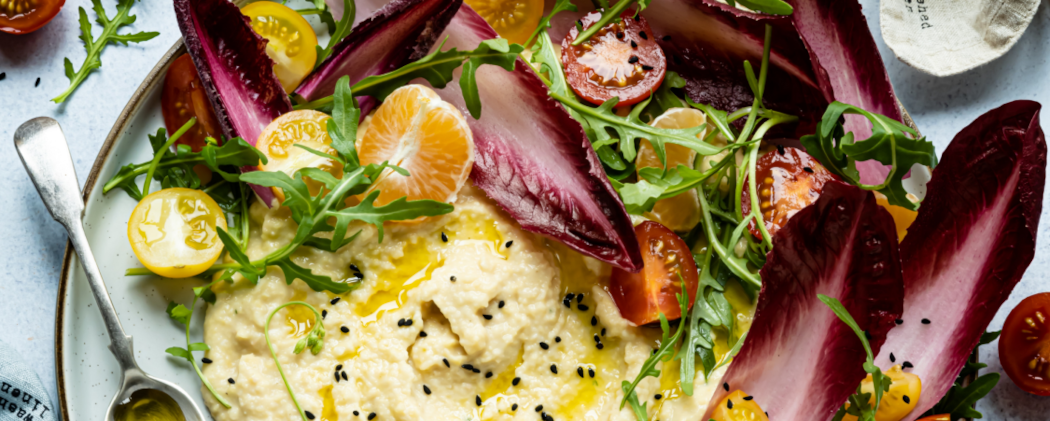
To help you get a feel for the Volumetrics diet in action, here’s a meal plan that would suit someone just getting started.
Breakfast
- 1 cup of oatmeal with ½ cup of blueberries and 1 tbsp of almond butter
- 1 cup of non-fat milk or almond milk
Snacks
- 1 small apple
- 1 oz of almonds
Lunch
- Large salad with mixed greens, ½ cup of cherry tomatoes, ½ cup of sliced cucumbers, ½ cup of sliced bell peppers, 4 oz of grilled chicken, and 2 tbsp of balsamic vinaigrette
- 1 cup of broth-based soup
Snacks
- 1 small pear
- 1 string cheese
Dinner
- 4 oz of grilled salmon
- ½ cup of brown rice or quinoa
- 1 cup of roasted vegetables (such as broccoli, cauliflower, or Brussels sprouts)
Dessert
- ½ cup of non-fat Greek yogurt with ½ cup of mixed berries
How does the Volumetrics diet compare to other popular diets?
There are so many diets out there these days. So, how does the Volumetrics diet stack up against some of the most popular ones? Let’s take a look.
Compared to Atkins or other low-carbohydrate diets, Volumetrics takes a more moderate approach, encouraging the consumption of both starchy and fibrous carbohydrates. So, while low-carb diets may have you saying goodbye to bread and hi to berries, the Volumetrics diet embraces both (just in different quantities).
Compared to keto and the Mediterranean diet, which both lean into a diet rich in healthy fats such as olive oil, nuts, and oily fish, the Volumetrics diet focuses on foods lower in calories like fruits, vegetables, and lean proteins. Although the Volumetrics diet doesn’t have any specific recommendations on fat intake, it prioritizes lower-fat foods.
The Volumetrics diet neither restricts food groups nor pits them against each other, and it has no gimmicks. It simply encourages a balanced intake of a wide range of health-promoting foods.
It pairs beautifully with intermittent fasting, too. In terms of what to eat during intermittent fasting for best results, a Volumetrics meal plan is pretty on point. Same goes for what you can drink while fasting.
Adding the two approaches together could not only boost your health, but Volumetrics food choices would also help in managing hunger, making fasting easier.
Fancy trying intermittent fasting out? Take our Simple quiz, and we’ll give you a hand!
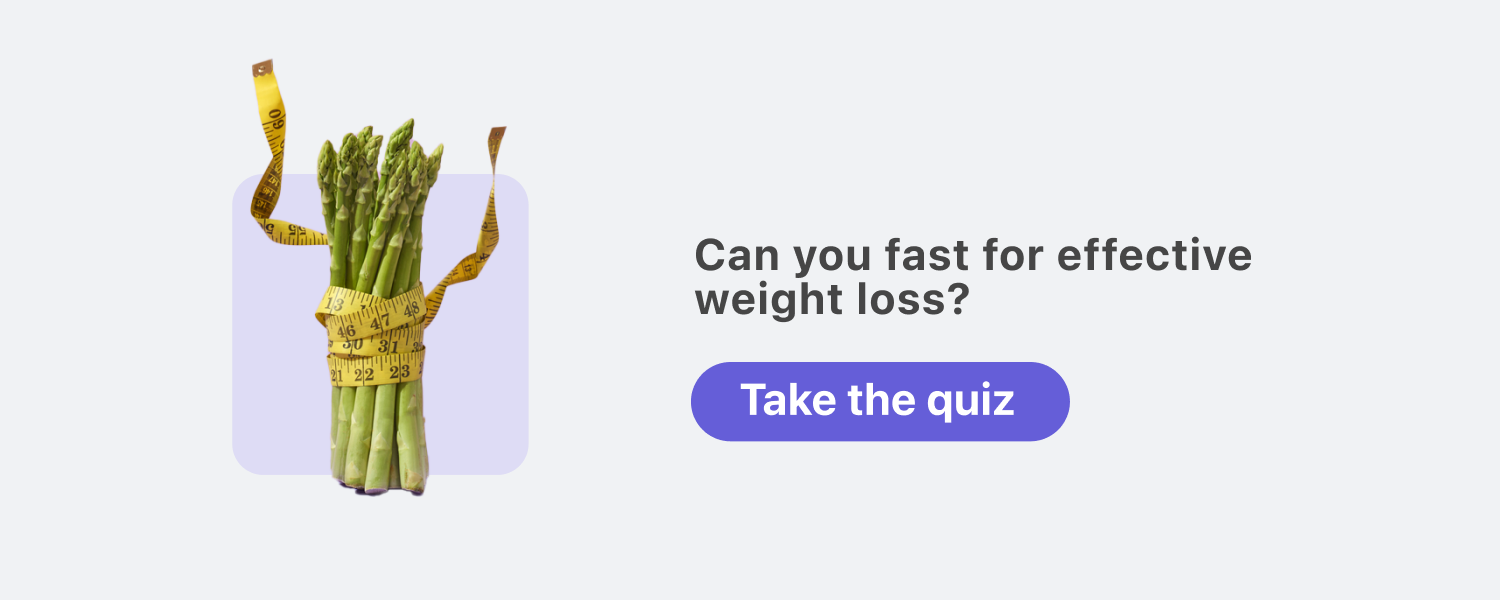
Benefits of the Volumetrics diet
Now that we know what the Volumetrics diet is all about, let’s check out some of its benefits.
Weight loss
The Volumetrics diet has a solid track record in helping people lose weight.[6]
Improved overall health
Many of the foods recommended by the Volumetrics diet are rich in fiber.
High-fiber foods are linked with a range of health benefits, including improvements in your gut health and a reduced risk of lifestyle-related conditions like type 2 diabetes and cardiovascular disease.[7]
Feeling full and satisfied
By eating more low energy density foods, you could feel fuller and more satisfied and keep hunger and cravings off your case.[8]
A happier bowel
Once your gut has had time to adapt, a higher fruit and veggie intake may improve bowel movements and reduce the bloating associated with constipation, etc.
Risks of the Volumetrics diet
As always, with any diet, there are some drawbacks to be aware of.
Meal planning and preparation
The Volumetrics diet requires meal planning, preparation, and cooking. That can take some getting used to and make it harder to stick to.
That said, with time and practice, planning, prep, and cooking are habits you can build.
Food costs
Fresh veggies, fruit, and meat can be expensive, and it may not be easy to afford shifting your diet heavily in this direction.
Impact on other health conditions
If you have a medical condition like diabetes or renal disease, you may need to modify this diet to meet your specific nutrition needs. If this applies to you, talk to your doctor or registered dietitian before making any changes.
Gastric discomfort
When we suddenly shift from a low fruit / veggie diet to one that is higher, we can experience gut symptoms like bloating, flatulence, etc.
Increasing your fruit and veggie more gradually — and chewing your food well — can help you avoid this … ahem … uncomfortable change in wind conditions.
Pros and cons of the Volumetrics diet
| Pros | Cons |
| High in nutrient-rich foods | More meal planning and prep |
| You can eat more food | Changing food habits is tricky |
| It can help you lose weight | It’s not for everyone |
| It could improve your health | Your grocery bill may increase |
Pros
The Volumetrics diet is full of nutrient-rich foods that have fewer calories per gram. This allows you to eat plenty and feel satisfied while still losing weight and could improve your health overall.
Cons
The Volumetrics diet will take more planning and preparation and could push up your weekly food bill. It’s not a great fit for those with certain dietary restrictions. Plus, cutting back on high-calorie foods you enjoy can be tough.
Is the Volumetrics diet right for you?
Now that you’re in the know about how the Volumetrics diet works, whaddya think? Could it be right for you?
Deffo for you
If you’re someone who:
- dislikes feeling hungry when dieting
- is open to trying new foods
- has time to plan and cook a little more
- wants to lose weight
- has some health improvement goals
Then go ahead and give the Volumetrics diet a go!
Even if you’re unsure whether you have time for planning and cooking, or you feel like your love of chocolate ice cream could be an impossible obstacle to overcome, you could still do this.
No need for a whole-scale overhaul. Think about how you might move toward a Volumetrics style of eating, one small step at a time. For instance, could you:
- Reduce your ice cream by 1/4 cup and replace that with blueberries?
- Halve your breakfast bagel and add in some spinach and tomatoes?
- Swap a fattier protein, like bacon, for a leaner one, like chicken?
These small swaps don’t take much (if any) extra prep but will boost your nutrition and keep you tracking toward your goals.
Deffo not for you
If you have some pretty strict dietary restrictions, the Volumetrics diet may not be the best fit. Check with your doc if you’re not sure. Don’t worry, though — there are other options out there.
At Simple, we’re big fans of intermittent fasting, which is when you alternate between eating and fasting. Intermittent fasting comes in many different forms. Our favorites are time-restricted eating (TRE) schedules like 16:8 intermittent fasting, 14:10 intermittent fasting, or 12-hour intermittent fasting. They’re much more flexible and generally involve less potential side effects, but it’s still a good idea to ensure your healthcare team is on board before making any changes to your eating habits.
(There are other more restrictive forms of intermittent fasting, too, like the 5:2 diet or alternate-day fasting, but we don’t recommend any fasting schedules that involve going without food or with limited caloric intake for 18+ hours without medical approval!)
If you’re new to intermittent fasting, check out our guide to intermittent fasting for beginners and see which of the schedules we share could suit you. If you need a little more help deciding your best approach, try our Simple quiz.
One final note: we’d suggest avoiding water fasting and the Eat Stop Eat method, as these schedules won’t fully support your health and well-being.
The Volumetrics diet and weight loss
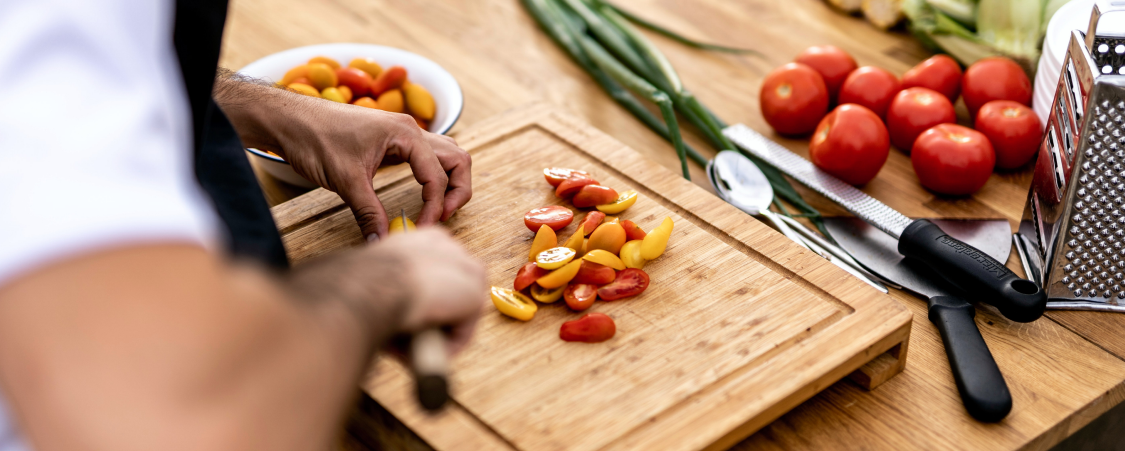
According to research, the Volumetrics diet can reduce your energy intake more successfully than diets like Atkins or the Ornish diet,[1] and studies show it’s a good bet for sustainable and healthy weight loss.[9]
In fact, one study found that those who followed the diet lost 1–2 pounds per week on average,[3] and even greater weight loss is possible.[10]
Is the Volumetrics diet budget-friendly?
It depends on your budget.
The Volumetrics diet focuses on fresh fruits and vegetables, lean proteins, and whole grains. These can be pricier than processed and packaged foods. Plus, some ingredients may not be as easy to find depending on where you live and will require more time to prep.
With that in mind, how could we make the Volumetrics diet more budget-friendly? Here are a few ideas.
Buying your fresh produce in season could make it more cost-effective if your grocer sources locally. You could also buy in bulk when things are on sale at the grocery store and freeze anything you can’t use immediately. There are always canned and pre-frozen options, too — there’s nothing wrong with making the most of these!
Nope, the Volumetrics diet does not require exercise. That said, exercise can help with weight loss and health goals.
On a Volumetrics diet, you can eat fruits, vegetables, broth-based soups, chicken, fish, whole grains, beans, and a lot more.
The Volumetrics diet can be really effective. In fact, after a year of following this diet, you could lose more weight and feel less hungry than those on a traditional low-fat diet.[10]
Studies show that intermittent fasting does not slow metabolism.
However, if you load your eating windows with ultra-processed foods (things that fall into the “high density” category of the Volumetrics diet) your metabolic health may take a turn for the worse.[11]

- Klos B, Cook J, Crepaz L, Weiland A, Zipfel S, Mack I. Impact of energy density on energy intake in children and adults: a systematic review and meta-analysis of randomized controlled trials. Eur J Nutr. 2023 Apr;62(3):1059–76.
- Rolls BJ, Drewnowski A, Ledikwe JH. Changing the energy density of the diet as a strategy for weight management. J Am Diet Assoc. 2005 May;105(5 Suppl 1):S98–103.
- Rolls BJ, Roe LS, Beach AM, Kris-Etherton PM. Provision of foods differing in energy density affects long-term weight loss. Obes Res. 2005 Jun;13(6):1052–60.
- Wang DD, Li Y, Bhupathiraju SN, Rosner BA, Sun Q, Giovannucci EL, et al. Fruit and Vegetable Intake and Mortality: Results From 2 Prospective Cohort Studies of US Men and Women and a Meta-Analysis of 26 Cohort Studies. Circulation. 2021 Apr 27;143(17):1642–54.
- Hjorth MF, Astrup A. The role of viscous fiber for weight loss: food for thought and gut bacteria. Am J Clin Nutr. 2020 Feb 1;111(2):242–3.
- Rolls BJ, Roe LS, Meengs JS. The effect of large portion sizes on energy intake is sustained for 11 days. Obesity . 2007 Jun;15(6):1535–43.
- Slavin J. Fiber and prebiotics: mechanisms and health benefits. Nutrients. 2013 Apr 22;5(4):1417–35.
- Wing RR, Phelan S. Long-term weight loss maintenance. Am J Clin Nutr. 2005 Jul;82(1 Suppl):222S – 225S.
- Buckland NJ, Camidge D, Croden F, Lavin JH, Stubbs RJ, Hetherington MM, et al. A Low Energy-Dense Diet in the Context of a Weight-Management Program Affects Appetite Control in Overweight and Obese Women. J Nutr. 2018 May 1;148(5):798–806.
- Ello-Martin JA, Roe LS, Ledikwe JH, Beach AM, Rolls BJ. Dietary energy density in the treatment of obesity: a year-long trial comparing 2 weight-loss diets. Am J Clin Nutr. 2007 Jun;85(6):1465–77.
- Lv JL, Wei YF, Sun JN, Shi YC, Liu FH, Sun MH, Chang Q, Wu QJ, Zhao YH. Ultra-processed food consumption and metabolic disease risk: An umbrella review of systematic reviews with meta-analyses of observational studies. Frontiers in Nutrition. 2024 Jan 31;11:1306310.
